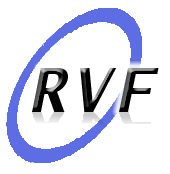1. Clarification of rough beer in brewery industry
Standard filtration uses diatomaceous earth (Kieselguhr) into filter-press and consists in the retention of solid particles (yeast cells, macrocolloids, suspended matter) and solutes responsible for haze. After use the disposal of Kieselguhr (after filtration) are a major difficulty due to their polluting effect. From the health perspective, the used diatomaceous earth is classified as ‘hazardous waste’ before and after filtration. The membrane microfiltration (cross-flow or dynamic) is used to provide an alternative to the conventional technologies. However this operation must satisfy the same economic and qualitative criteria as standard filter-press filtration. The variety of compounds (chemical diversity, wide-size range) to be retained makes this operation one of the most difficult to control.
RVF has been extensively investigated for the clarification of rough beer (lager beer type) and compared with other microfiltration technologies (cross-flow MF onto ceramic and organic membranes of tubular and hollow fiber types) - Fig. 1.1.

Fig. 1.1. Comparison of flux vs. filtrated beer's haze for a number of MF technologies used for clarification of rough beer. Target area: EBC's specifications onto haze 0.4 - 1 EBC unit and flux > 100 L/(h*m2).
Rough beer clarification (elimination of yeast cells and suspended matter) was achieved with RVF technology and stainless steeel membranes with ceramic selective layer. It was demonstrated that
- the selected membrane and chosen conditions of filtration may satisfy quality and flux criteria,
- the performances were validated for volume reduction factor VRF > 10 (Fig.1.2),
- yeast cells remain a major contribution to fouling but are not critical during the concentration phase,
- presented performances constitute a significant improvement in comparison with conventional membrane techniques reported in literature and actually applied in brewery industry.



Fig. 1.2. Typical flux for RVF clarification of the rough beer during the concentration period
Publications on the application of RVF technology in brewery
Fillaudeau L., Jitariouk N., Gourdon A. Use of RVF Technology to Achieve Rough Beer Clarification and Cold-sterilisation of Beer. 28th Congress of the European Brewery Convention, Budapest, Hungary, 12-17 May 2001, Publisher Fachverlag Hans Carl, Germany, n°ISBN 90-70143-21-6.
Fillaudeau L., Ricatte G., Moreau A., Blanpain-Avet P., Jitariouk, N., Gourdon A. Etude de la clarification de la biere de garde par microfiltration tangentielle – Application de la technologie RVF. 6ième colloque PROSETIA (Procédés de Séparation et de Transformation en Industrie Alimentaire) - 19-21 Mars 2001 - Axe : Procédé de séparation par membranes (in French).
Ermolaev S., Fillaseau L., Ricatte G., Moreau A., Jitariouk N., Gourdon A. Etude hydrodynamique d'un module de filtration dynamique (technologie RVF) : détérmination des courbes de frottement et de consommation de puissance. 7-ème colloque PROSETIA (Procédés de Séparation et de Transformation en Industrie Alimentaire) - 19-20 Mars 2002 – Thème : Membranes / Procédés membranaires (in French)
Fillaudeau L., Moreau A., Ermolaev S., Jitariouk N., Gourdon A. Dynamic filtration for rough beer clarification: application of rotating & vibrating filtration (RVF technology). 29th International Congress of the European Brewery Convention, Dublin, Ireland, 17-22 May 2003.
Fillaudeau L., Boissier B., Moreau A., Blanpain-Avet P., Ermolaev S., Jitariouk N., Gourdon A., "Investigation of rotating and vibrating filtration for clarification of rough beer", J. Food Engineering, 80, 206-217, 2007.
Fillaudeau L., Boissier B., Ermolaev S., Jitariouk N., Gourdon A., "Etude hydrodynamique d'un module de filtration dynamique", Ind. Alim. Agri., Septembre / Octobre, 124 (9), 8-16, 2007 (in French)
Daufin G., Escudier J.P., Carrère H., Bérot S., Fillaudeau L., Decloux M., “Recent and emerging application of membrane processes in food and dairy industry”, TransIChemE, vo.79, Part A, June 2001, pp.1-14.
Daufin G., Escudier J.L., Carrère H., Bérot S., Fillaudeau L., Decloux M., "Recent and emerging applications of membranes processes in food and dairy industry", PERMEA 2003, Tatranské Matliare, Slovakia, September 7-11, 2003, Proceedings p.54 Abstract & CD Publisher Slovak Society of Chemical Engineering, ISBN n°80-227-1922-6, Editor S Schlosser and R Kertész.
2. Cow skim milk microfiltration
2.1 Bacteria removal
Decimal bulk milk total bacterial count (DBMTBC) reduction value is 3 - 3.5
Total Nitrogen Rejection is lower than 4%.


2.2 Caseins and soluble proteins separation

3. Leachate evaporation concentrate ultrafiltra- tion before reverse osmosis
3.1 Leachate evaporation concentrate ultrafiltration
Organic UF membranes, MWCO is 50 - 100 kD

3.2 Analyses of the liquids during leachate evaporation concentrate ultrafiltration (volume reduction factor VRF is ~3)
| Liquid | Dry solids, g/l | Mineral solids, g/l | Organic matter, g/l | Dry solids rejection, % | COD, mgO2/l | COD rejection, % |
Leachate | 38.0 | 31.5 | 6.6 | - | 18.1 | - |
Concentrate | 40.7 | 28.8 | 11.9 | - | 23.1 | - |
Permeate n°1 | 33.2 | 27.7 | 5.5 | 18.4 | 15.5 | 33.0 |
Permeate n°2 | 30.7 | 25.9 | 4.8 | 24.5 | 14.0 | 39.5 |
Permeate n°3 | 31.5 | 27.8 | 3.8 | 22.4 | 13.9 | 39.7 |
